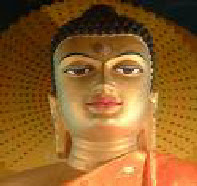The Religion of Harappa

As is the case with the civilizations of the ancient world, religion must have played an important role in the lives of Harappan people. However, nothing can be said with certainty about the religious life of the people of Indus valley civilization since our information on the topic is fragmentary. The Harappan religion was polytheistic. On the basis of information gathered from Harappan seals, seal impressions, terracotta and metal figures, cemeteries, etc, we can come to the conclusion that worship of the Mother Goddesses was very much prevalent in the society. It is very much to the point to underline the fact that worship of Mother Goddesses came into vogue in Hinduism one thousand years after the decline of Harappan culture. Other traits of later Hinduism such as worship of Pashupati Shiva, sacred animals trees etc, were practised by the Harappan people. Among the male gods, the most striking is a three faced horned deity seated cross legged on a throne and surrounded by four


